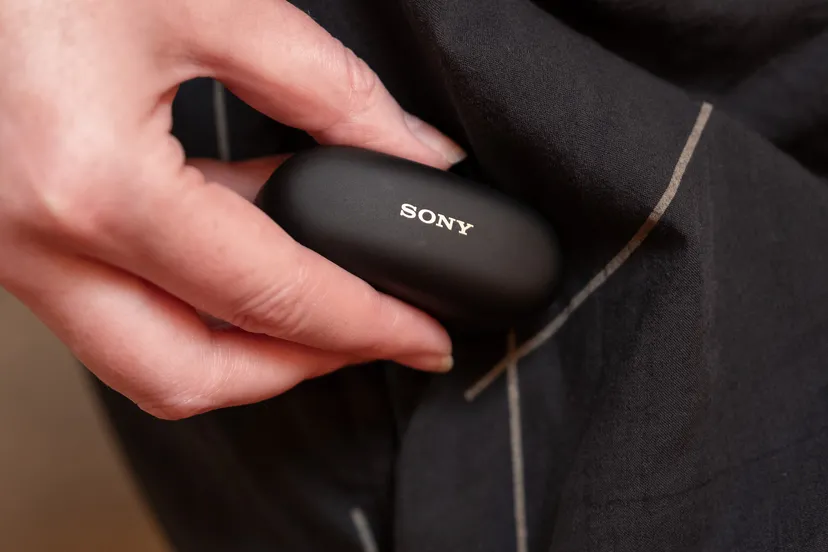Looking for the best earbuds to buy? I’ve got two top recommendations. First, consider the brand of your phone. Like flagship smartphones, wireless earbuds are generally excellent overall. They’ve come a long way in a short time and often work best with devices from the same manufacturer due to shared features and technology. The second recommendation is simple: Sony. Despite their struggle in the smartphone market, Sony excels in the earbud department. Their products are top-notch, offering great sound quality, balance, and comfort. Personally, I’m a big fan of Sony for both earbuds and over-ear headphones. If you’ve spotted me on a plane or in a virtual meeting, I’m likely wearing my trusty WH-1000XM5s. And if you’ve bumped into me on the street, chances are I’ve got the LinkBuds S in my ears.
The WH-1000XM5 offers amazing sound quality, but it’s the unparalleled comfort that sets them apart from the competition. Finding comfortable over-ear headphones is relatively easy, but when it comes to earbuds, it’s a different story. Many people struggle to find a comfortable fit, and I understand the frustration because I’ve faced it myself. However, I must say that the LinkBuds S have truly impressed me in terms of both feel and fit. If Sony were to incorporate the sound architecture of the WF-1000XM4 earbuds into the LinkBuds S, they could easily outperform their rivals. When I heard about the WF-1000XM5, I couldn’t help but feel excited. As a music enthusiast, testing high-quality headphones is one of my favorite parts of the job, and Sony seems to be on the verge of achieving perfection. I must admit that the WF-1000XM5s are not my dream headphones, but Sony has made significant improvements since the WF-1000 model back in 2017. The M5s are 25% smaller and 20% lighter, according to Sony, but they still can’t match the fit and comfort of the LinkBuds S. They are larger and don’t sit flush, protruding a bit more and lacking the secure anchor that makes them suitable for outdoor activities. If you’re in search of headphones for an active lifestyle, you may want to explore other options.

These buds offer a well-balanced sound that excels in a variety of genres, from ambient to hip hop. The bass is rich without overpowering other frequencies. While over-ear headphones provide a more immersive experience, Sony has managed to impress with these earbuds. Sony has taken a different approach with their chip design. Instead of cramming as much functionality as possible, they have created a separate chip called the QN2e for active noise cancellation (ANC). By doing so, they have been able to focus on controlling the six-mic array for measuring ambient noise, resulting in impressive ANC performance.
Although full ambient noise cancellation is not yet achievable, the on-board ANC works remarkably well in blocking out the sounds of the city. For those with sensory processing issues, these earbuds can be used without playing music to help with concentration. The new grills on the exterior also effectively block wind noise, making outdoor calls clearer. The eartips have been updated too. While they may take some getting used to, their foam material allows for a snug fit that passively cancels out noise. Time will tell if these tips are as durable as the previous ones, but they do seem less spongy. This is particularly important for people who plan to use their earbuds during workouts.
This latest generation is 15% smaller than its predecessor, making it sleeker and more comfortable to wear. Sony has made significant progress in reducing the size of their charging cases, which used to be ridiculously massive. The battery life remains impressive, offering eight hours of usage on the buds, and a total of 24 hours with the case. This means there’s plenty of battery power to support all your needs, whether it’s a long-haul flight or a full day of activities. Plus, charging time has been reduced by two minutes, and you can even charge them wirelessly!
The design of the earbuds has been improved as well, with a more rounded surface. This ensures better touch controls, although the previous flat surface wasn’t a major issue either. There are several convenient features to get accustomed to, such as play/pause with a tap on the right bud, noise canceling and passthrough toggles on the left, and quick access functions through taps on the buds. Additionally, there’s a new four-tap feature for volume control, but adjusting the volume on your device may be easier at that point. For Android users, the buds now offer spatial audio and headtracking, enhancing your audio experience. However, iOS users seeking these features may want to consider the AirPods Pro instead. Another impressive feature is the built-in bone conduction, which detects your voice while canceling out other human voices for clearer communication.
It’s important to note that these earbuds come at a higher price point. The M4s are $50 more expensive than their predecessor, and these latest ones add another $20, bringing the total to $300. Comparatively, the AirPods Pro are $50 cheaper, and the LinkBuds S are $100 cheaper. Ultimately, it’s up to you to decide what you value most in a pair of earbuds. If you prioritize superior sound quality and don’t mind the price, Sony has you covered.
